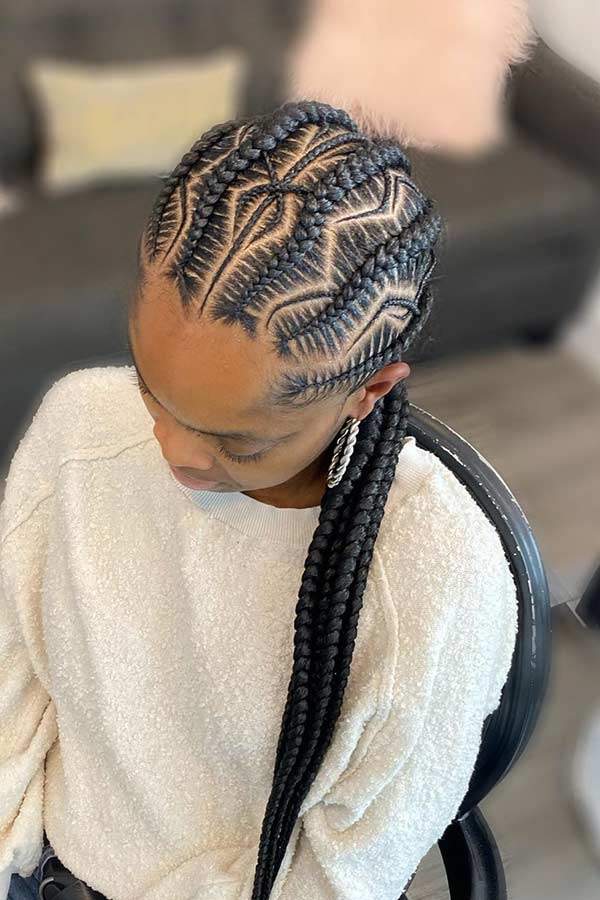Do you know that a hairstyle can carry centuries of history, social commentary, and profound cultural meaning? African cornrow braids represent precisely that: a rich tapestry woven through time, reflecting the identity and heritage of a continent and its diaspora.
From the intricate designs that tell ancient stories to the simple elegance of everyday patterns, cornrows have transcended generations, styles, and geographical boundaries. This article will delve deep into the fascinating world of African cornrow braids, exploring their origins, diverse styles, and essential care practices. The significance of these braids extends far beyond mere aesthetics; they embody the spirit of resilience, creativity, and cultural pride.
The narrative of cornrow braids is one of profound depth and rich symbolism. Throughout history, these braids have served as a powerful means of non-verbal communication, often revealing insights into a person's social status, age, and even their tribal affiliation. In essence, cornrows are not merely a fashion statement; they are an integral component of cultural identity. As we explore the different styles, techniques, and trends, we'll gain a deeper appreciation for this art form.
- Francesca Farago Rise To Fame Career Social Media Impact
- Unveiling Sam Reids Wife Her Life Impact On His Career
Cornrows, also known as canerows, are a traditional African hairstyle, dating back centuries, with origins linked to various tribes across the continent. Their history is intertwined with the social and political landscape of Africa, from serving as symbols of identity and status to acting as a form of resistance during times of oppression.
Different braiding styles were utilized by various tribes and clans, each with its own unique pattern. The Himba people of Namibia, for instance, are known for their distinctive braiding styles that are closely associated with their cultural heritage. During the transatlantic slave trade, when enslaved Africans had their cultural identity and freedom stripped away, cornrows became a form of defiance, allowing them to maintain some sense of self. These intricate styles served as a way to navigate their environment and maintain their cultural identity.
| Name | Profession | Contribution to Hair Culture | Reference |
|---|---|---|---|
| Madam C.J. Walker | Entrepreneur, Philanthropist | Pioneered the black hair care and cosmetics industry, creating products and jobs for African Americans. | Biography.com |
| Angela Davis | Activist, Scholar | Promoted the significance of black hair as a form of cultural expression and political statement. | Britannica |
| Tracee Ellis Ross | Actress, Entrepreneur | Championed natural hair and self-acceptance through her platform and work in the media. | IMDb |
| Leila Noelliste (Black Girl Long Hair) | Blogger, Entrepreneur | Established a popular platform celebrating natural hair, offering resources and community support. | BlackGirlLongHair.com |
- Philippa Northeasts Marriage Inside Her Private Life Relationship
- Jasmine Richardson Unpacking The Tragic Story Its Lessons


